smallcase in focus: Equity & Gold – April 2023

“The world’s central banks and the International Monetary Fund still have vaults full of bullion, even though currencies are no longer backed by gold. Governments hold on to it as a kind of magic symbol, a way of reassuring people that their money is real.”
– James Surowiecki, American Journalist
Humans have valued gold all throughout history. The first recorded instance of gold usage goes back to 4000 BC. By 1500 BC, gold had become the recognized standard medium of exchange for international trade. This association of money with gold has continued into modern times as well. After the end of the 2nd World War in 1945, 44 countries came together to create the Bretton Woods monetary system.
While gold coins are not official currencies anymore and the Bretton Woods system has long been scrapped, Central banks around the world continue to keep a portion of their liquid reserves in gold. The share of gold in the total foreign exchange reserves of India has increased from about 5.88% at end-September 2021 to about 7.01% at end-March 2022 to about 7.81% at the end of March 2023. Not just RBI, but other central banks across the world have also been increasingly buying gold. Central bank gold purchases in 2022 were at a 7-decade high!
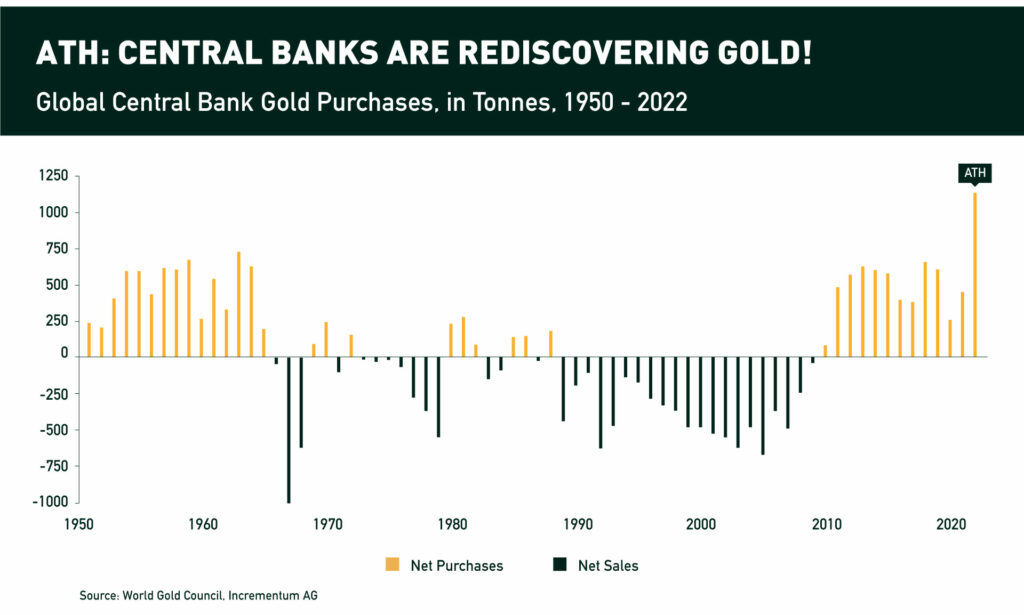
This trend has continued into 2023, with Central banks accumulating gold at the fastest pace on record in the first two months of the year.
So why are Central Banks, especially from emerging markets, buying so much gold? A World Gold Council survey, amongst Central Banks from both advanced and emerging markets, regarding factors affecting the Central bank’s decision to hold gold, throws light on the possible reasons.
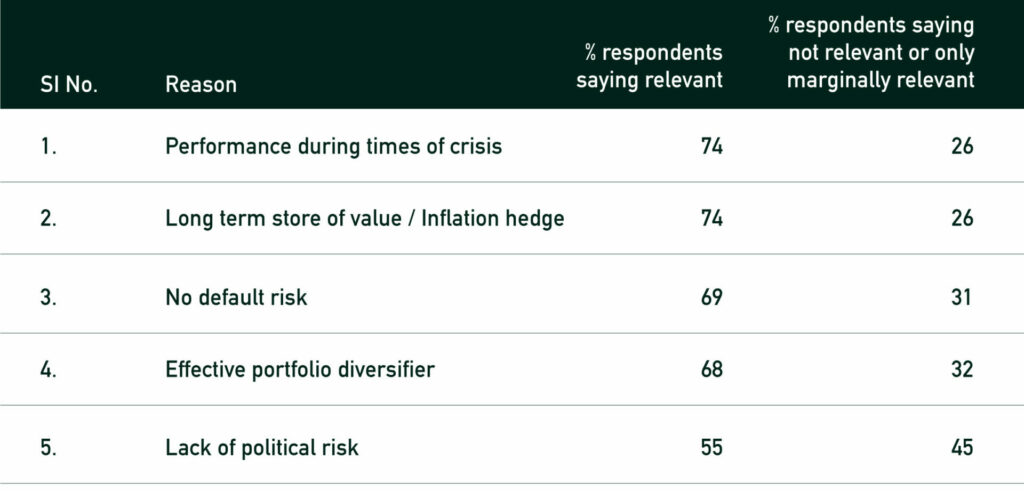
We had discussed the 1st and 2nd items in July 2022 last year as well. I will reproduce the relevant sections, with necessary updations, to ensure the completeness of the discussion.
The below table compares the performance of gold against the Nifty 50 performance during times of crisis.
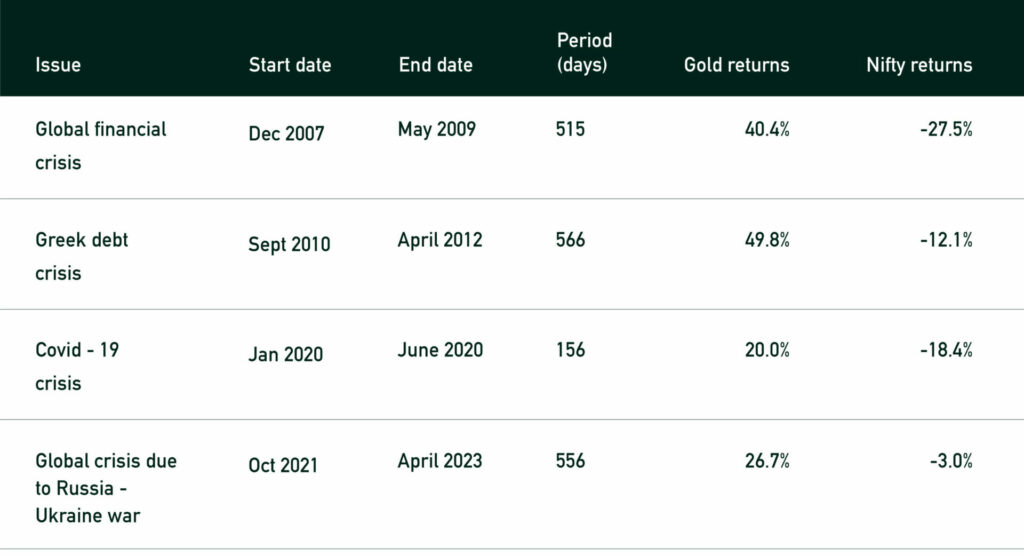
The below table illustrates the performance of Nifty 50 and gold during periods of increasing inflation. We have considered wholesale price inflation for the purpose of the below analysis.

Items 3-5 need some context. When Russia invaded Ukraine, the US in an attempt to punish Russia, froze Russia’s forex reserves worth ~$300 billion. In addition, it also introduced sanctions against Russia. These measures prompted other countries, especially emerging economies, to wonder if the US can levy a sanction on Russia’s forex reserves (which have to be mandatorily located in the United States), there is no guarantee why the US cannot freeze their reserves too. Hence the Central Banks of these countries have started buying gold. In 2022, central banks bought a record 1,136 tonnes of gold, worth around $70 billion. The table below provides details of some big purchasers.
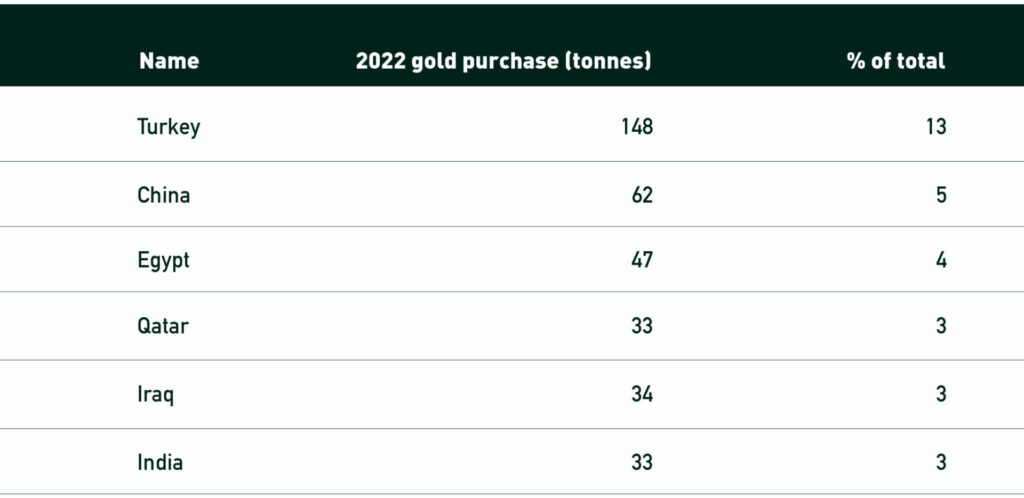
The case for Gold as an asset class
As reiterated earlier as well, a portfolio that includes both equity and gold is an efficient way to achieve capital protection and create wealth in a sustainable fashion. The performance of gold will offset the poor performance of equities during unfavourable macro events or persistently high inflation.
The Equity & Gold smallcase includes Nifty Bees and Gold Bees in the proportion of 70% and 30%. While the equity portion of the smallcase assists in growing investment, the gold part of the smallcase protects the portfolio from large drawdowns.

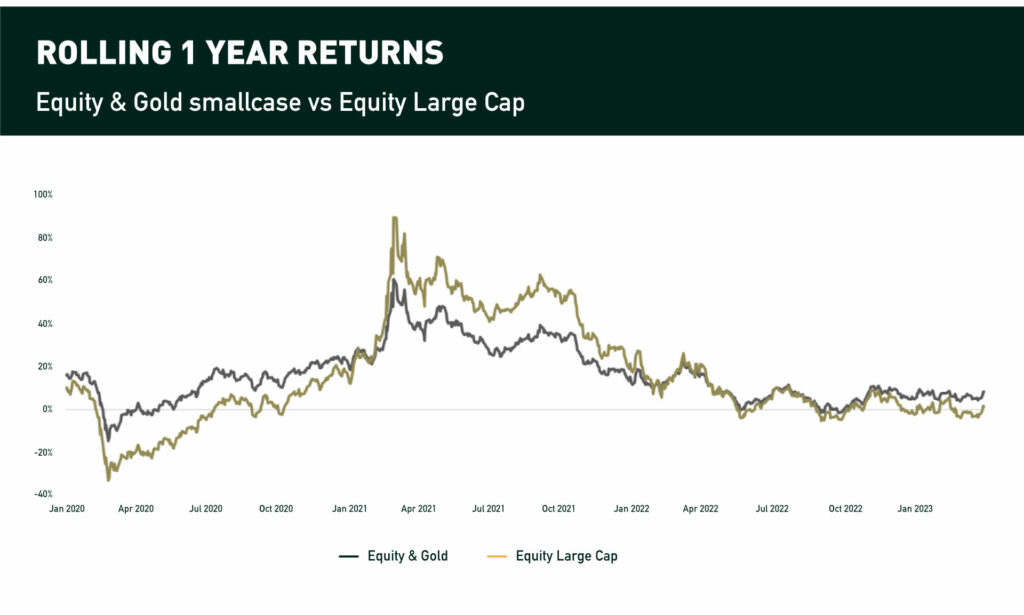
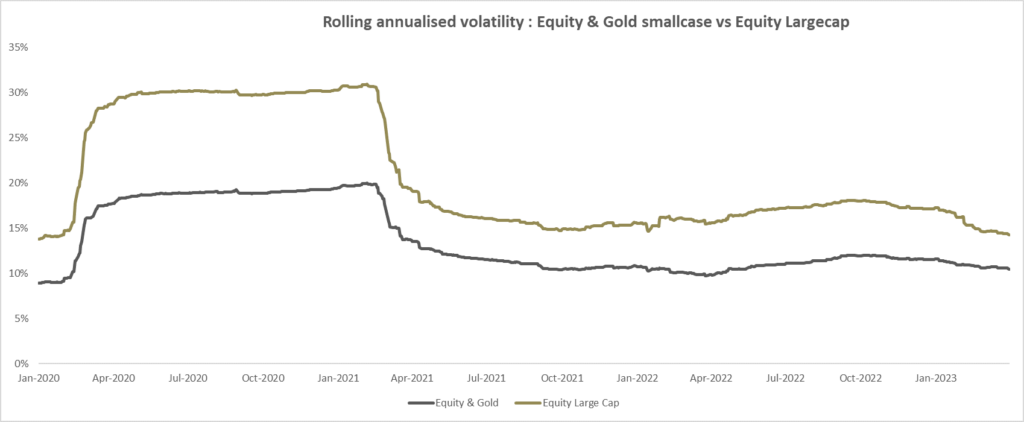
Since its inception in Jan 2019, on a rolling returns basis as well, the smallcase has performed better than large-cap equities. The smallcase’s median rolling 1-year return since inception is 14.3% compared to 7.9% rolling returns generated by large-cap equities during the same period.
The smallcase’s rolling 1-year volatility is also significantly below that of equity large-cap stocks.
Drawdown measures the downside risk of a stock/portfolio. Due to the presence of gold in the smallcase, its drawdown tends to be less than that of pure equity large-cap assets. Better risk-adjusted returns and lower drawdowns in all time frames prove that for investors seeking to take exposure to large-cap equity via the ETFs route, Equity & Gold smallcase is a better option.

This low volatile smallcase minimizes the risk of market cycles and is suitable for any investor seeking to create wealth over the long term.
Disclaimer: Investment in securities market are subject to market risks. Read all the related documents carefully before investing. Registration granted by SEBI, membership of BASL and certification from NISM in no way guarantee performance of the intermediary or provide any assurance of returns to investors. The content in these posts/articles is for informational and educational purposes only and should not be construed as professional financial advice and nor to be construed as an offer to buy/sell or the solicitation of an offer to buy/sell any security or financial products. Users must make their own investment decisions based on their specific investment objective and financial position and use such independent advisors as they believe necessary. Refer to our disclosures page, here.
Windmill Capital Private Limited – Research Analyst. SEBI Reg. No - INH200007645 No 51 Le Parc Richmonde, Richmond Road, Shanthala Nagar, Bangalore, Karnataka – 560025. Tel - +918041279566. CIN - U74999KA2020PTC132398 Compliance Officer – Ajoy Bharadwaj, Phone Number – 7738999687, Email Id - compliance@windmill.capital Support email id - support@windmill.capital




